-
Charlottesville
- (434) 296-5111
-
Great Falls
- (703) 759-3624
-
McLean
- (703) 288-2808
Georgetown Learning Centers Blog

PSAT, SAT, and ACT Seminar: The College Essentials
Last Wednesday, we hosted a free seminar on The College Essentials: PSAT, SAT, and ACT for parents and students in McLean and Great Falls. GLC Founder Annie Burnquist walked families through each of these tests in detail so they could plan ahead for these important assessments. We understand that many families are away during the summer, so we would like to provide a recap of Annie’s presentation for anyone who was unable to attend last week.
The College Essentials: PSAT, SAT, and ACT
1. PSAT
a. Structure
b. Sections
c. Scoring
d. National Merit Scholarship Qualifying Test (NMSQT)
2. SAT
a. Structure
b. Sections
c. Scoring
d. Score Reporting
e. Normal Testing Schedule
3. ACT
a. Structure
b. Sections
c. Scoring
d. Score Reporting
e. Normal Testing Schedule
4. SAT and ACT Comparison
5. Standardized Testing Timeline and 2014-15 Test Dates
PSAT Overview
The PSAT (also known as the National Merit Scholarship Qualifying Test, or NMSQT) does not directly influence college admissions, but it does present unique opportunities to both qualify for scholarship recognition and prepare for the SAT. Schools administer the PSAT each fall, and juniors’ scores are considered for National Merit Scholarship awards and recognition. The PSAT is often administered to sophomores and other underclassmen as well, in order to prepare them for the test and the SAT, which includes similar structure and content to the PSAT.
PSAT Structure
Thankfully, the PSAT is a relatively short standardized test. With 5 sections lasting a total of 2 hours and 10 minutes, the PSAT is an hour and a half shorter than the SAT.
PSAT Sections
The PSAT assesses students’ Critical Reading, Math, and Writing knowledge, primarily via multiple-choice questions.
Critical Reading: Sections 1 and 3
- 25 minutes per section
- 35 Reading Comprehension questions related to passages
- 13 Sentence Completion questions covering vocabulary and context
Math: Sections 2 and 4
- 25 minutes per section
- 28 Multiple-Choice questions covering arithmetic, algebra, geometry, and more
- 10 Grid-In questions to which students must supply their own answers (i.e. not multiple-choice)
Writing: Section 5
- 30 minute section
- 20 Sentence Correction questions dealing with grammar concepts and revision
- 14 Usage questions covering grammar errors
- 5 Paragraph Correction questions dealing with usage in the context of a passage
PSAT Scores
The PSAT’s three sections are scored on a scale ranging from 20 to 80, resulting in a total score between 60 and 240. This is similar to the SAT’s scale, which scores sections from 200 to 800 and results in a total between 600 and 2400. PSAT takers can simply multiply their scores by 10 to see equivalent SAT scores.
Some strategy is necessary to get the best results on the PSAT. Correct answers to multiple-choice receive 1 point, and blank answers receive 0 points, but incorrect responses lose ¼ point. Students who make careless guesses on questions they don’t understand will end up losing points and receiving lower scores. Conversely, students who can strategically eliminate answer choices and make educated guesses can maximize their results. The same strategy can be used on the current SAT, so the PSAT is a good opportunity for students to practice this skill.
National Merit Scholarship Qualifying Test
Juniors’ PSAT scores make them eligible for National Merit recognition and scholarship awards. The top 50,000 students nationally qualify for some form of recognition:
- Approximately 2/3 of the top 50,000 students receive letters of commendation.
- Commended students are not eligible for National Merit scholarships, but may be considered for business corporate scholarships.
- Approximately 1/3 of the top 50,000 students become semifinalists, designated on a state-by-state basis.
- These students receive applications to compete for scholarship awards. Applications include the student’s academic records, SAT scores, and a recommendation from his/her school principal.
- The top 15,000 semifinalist applicants become National Merit finalists.
- Finalists are eligible for scholarship awards.
- Approximately 8,000 finalists are awarded scholarships.
- Scholarship opportunities include $2500 National Merit Scholarships, corporate-sponsored scholarships, and college-sponsored scholarships.
Aside from helping students get ready for the SAT, the benefits of the PSAT are clear. National Merit recognition is a strong addition to a student’s college application, and the opportunity to receive a scholarship is also beneficial, though only a small number of students actually win them.
SAT Overview
The College Board’s SAT is traditionally the most popular college admissions test for high schoolers. Most colleges require students to submit SAT or ACT scores (though an increasing number are making scores optional), and students generally take these tests as juniors and seniors.
SAT Structure
The SAT is a long test, with 10 sections of content spanning 3 hours and 45 minutes. The test includes multiple sections of Critical Reading, Math, and Writing content, along with one experimental section that is not counted in the student’s scores.
SAT Sections
Like the PSAT, the SAT tests students on Critical Reading, Math, and Writing, but it is a longer test that includes a written essay.
Critical Reading: Three sections of multiple-choice questions
- 25 minutes per section
- Reading comprehension questions based on short, long, and paired passages
- Vocabulary-based sentence completion questions
Math: Three sections of multiple-choice questions, with free response questions included in one section
- 25 minutes per section
- Math content including numbers and operations, algebra I, algebra II, functions, geometry, and basic statistics and probability
Writing: Two sections of multiple-choice questions and one essay
- 25-minute written essay that requires students to respond to a prompt
- 25-minute multiple-choice section covering grammar usage, sentence corrections, and paragraph corrections
- 10-minute multiple-choice section on grammar usage
Experimental Questions: One section of multiple-choice Math or Critical Reading questions
- 25 minutes in length
- Not included in students’ scores
- Used to test new material for fairness and accuracy
- Students will not know which of the SAT’s 10 sections is experimental
SAT Scoring
The SAT’s three sections are scored on a scale of 200-800 points, leading to a maximum possible score of 2400. The national average scores are generally around 500 points per section:
- Critical Reading – 502
- Math – 515
- Writing – 494
- Cumulative – 1511
As with the PSAT, strategic testing yields good results on the SAT due to its scoring. Each correct multiple-choice answer scores 1 point, each unanswered question scores 0 points, and each incorrect answer deducts ¼ point. Grid-in math questions are not penalized for incorrect answers. Students who guess carelessly often end up losing substantial points, but those who eliminate incorrect answer choices and guess intelligently can maximize their scores.
SAT Score Reporting
The College Board offers Score Choice for the SAT, which gives students the option to choose which scores they send to colleges. Students can send scores from all tests, several tests, or only one test date. Students and their schools will always receive scores from all test dates, but Score Choice is a good way to make sure colleges only see desired scores on applications.
SAT Normal Testing Schedule
Most students take the SAT 2-3 times: once or twice as juniors, and one final time in the fall of senior year. Seniors applying early action or early decision need to take the SAT by the October test date, while those applying regular decision can usually still take the December and January SATs. Students should always check with each school, however, to make sure they don’t miss important testing and application deadlines.
ACT Overview
The major alternative to the SAT for decades, the ACT is actually now the most popular college admissions test in the country. Most colleges do require scores from the SAT or ACT, and many students choose to submit ACT scores along with or instead of SAT scores.
ACT Structure
The ACT is slightly shorter than the SAT, lasting 3 hours and 25 minutes including the optional essay. With 5 relatively long sections, the ACT’s format differs from the SAT’s, which includes 10 relatively short sections. Each ACT content area is included on only one section.
ACT Sections
Similar to the PSAT and SAT, the ACT tests Reading, Math, and Writing skills, but it also includes a Science reasoning section, and there are significant differences in terms of subject matter and structure.
English
- 45 minute section
- 75 multiple-choice questions covering standard English grammar and rhetoric, as related to reading passages
Math
- 60 minute section
- 60 multiple-choice questions on material such as arithmetic, algebra, geometry, trigonometry, and statistics
Reading
- 35 minute section
- 40 multiple-choice reading comprehension questions based on passages
Science
- 35 minute section
- 40 multiple-choice science questions focusing on the interpretive, analytical, and problem-solving skills required by the natural sciences
Writing
- Optional 30 minute section
- Essay measuring writing skills emphasized in high school English classes and entry-level college composition courses
ACT Scoring
Each of the ACT’s multiple-choice sections is scored on a scale of 1-36. Students also receive a composite score that averages the four section scores on the same 1-36 scale. Students do receive a subscore on the Writing test’s essay ranging from 2-12, and a combined English/Writing score is also provided, weighing the English section score two-thirds and the Writing score one-third. National average scores are generally around 21:
- English – 20.7
- Math – 21
- Reading – 21.5
- Science – 21
- Composite – 21.1
Strategy is less of a necessity on the ACT compared to the SAT, since incorrect answers are not penalized. Since this is the case, students should make sure they answer all of the questions on the ACT to maximize their scores.
ACT Score Reporting
Similar to the SAT, the ACT allows students to choose which test scores to send to colleges.
ACT Normal Testing Schedule
Students who choose the ACT usually take it 2-3 times: once or twice as juniors, and once more senior year. Students should check with the schools they plan to apply to in order to make sure they don’t miss important testing and application deadlines.
4. SAT and ACT Comparison
Please click on the images below to view a convenient side-by-side comparison of the SAT and ACT for decision-making purposes.
5. Standardized Testing Timeline and 2014-15 Test Dates
Please click on the images below to see some useful information about testing timelines and upcoming test dates for the 2014-15 school year.
Annie really enjoyed the opportunity to share information about the PSAT, SAT and ACT with so many families last week. If you have any questions about these essential tests, please contact and stay tuned for details about additional seminars coming up later this year!

Erin Doyle
Director of McLean
Georgetown Learning Centers
Would you like to share your thoughts?
Would you like to share your thoughts?
Leave a Reply
You must be logged in to post a comment.

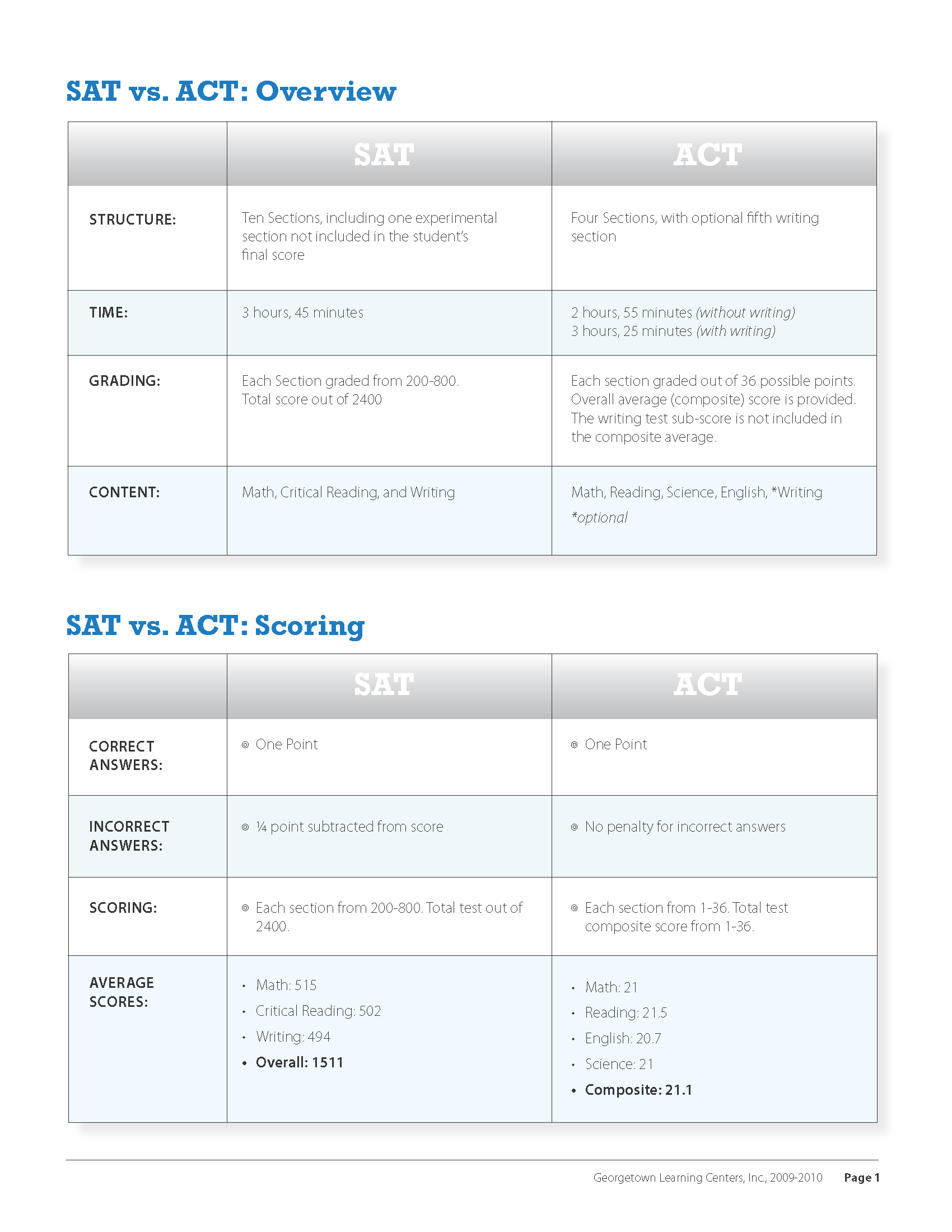
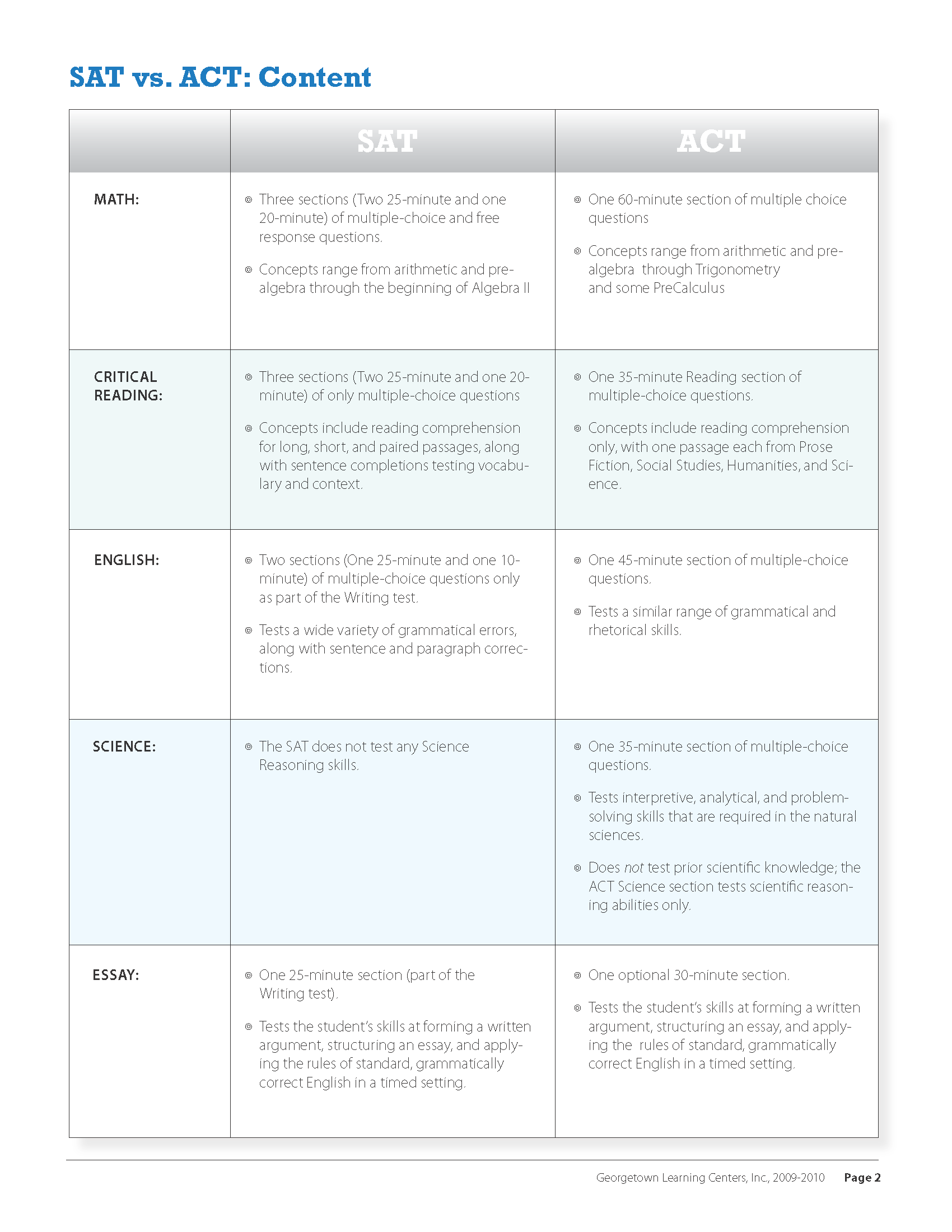
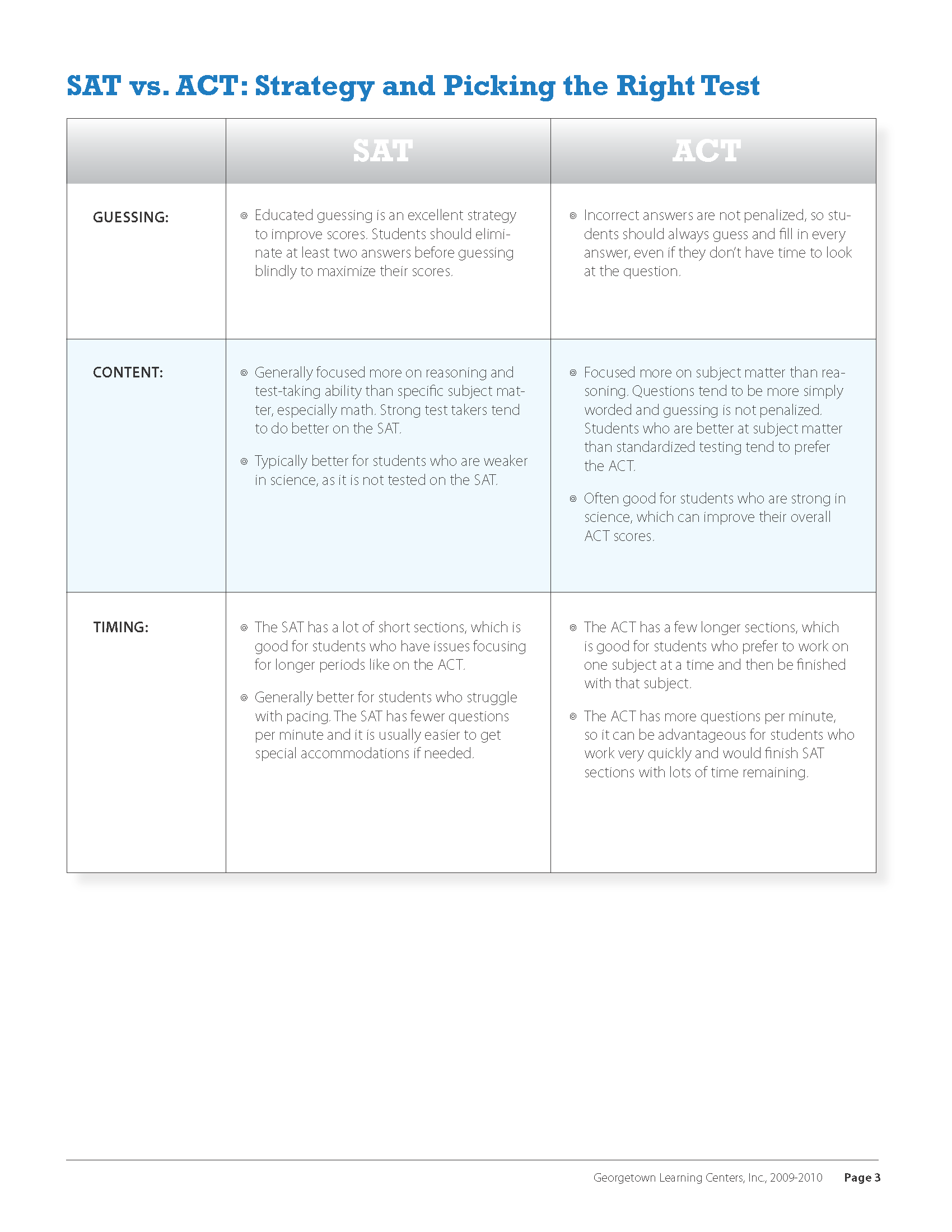
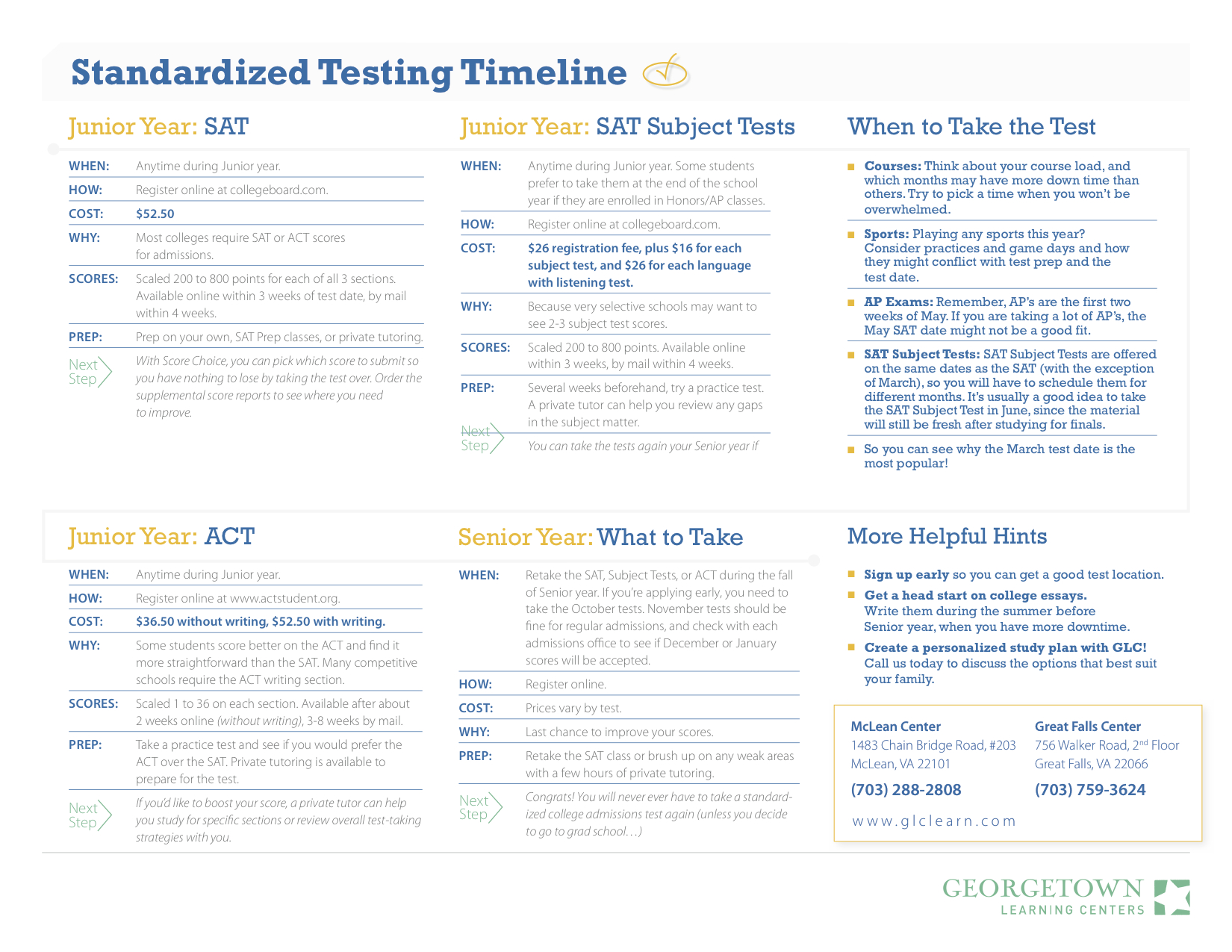
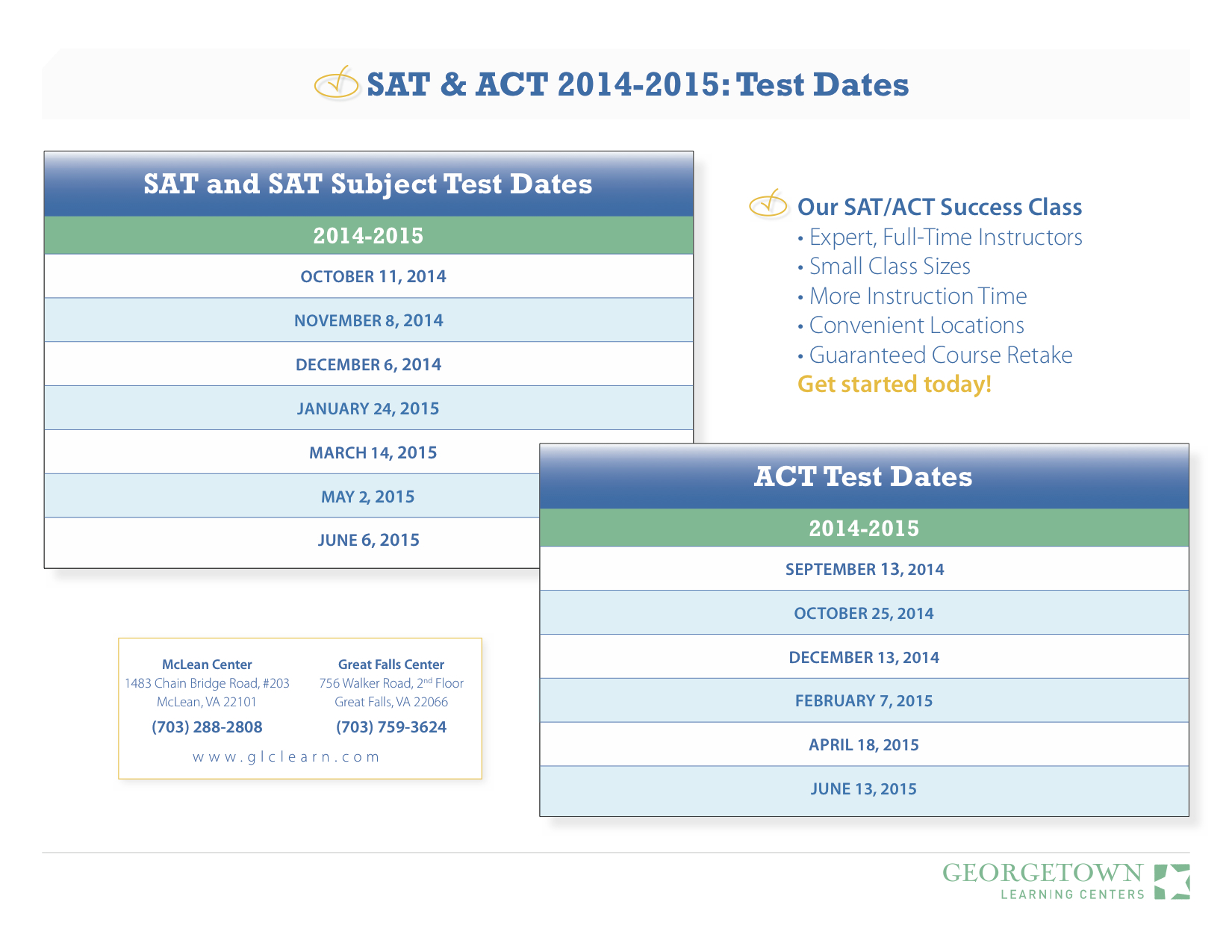
0 Comments